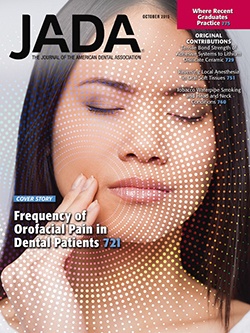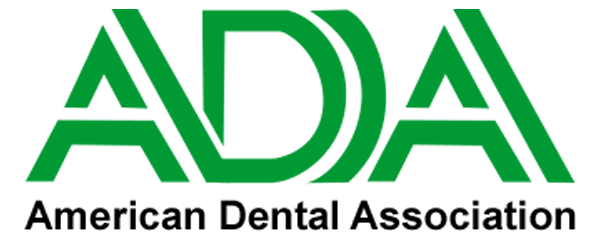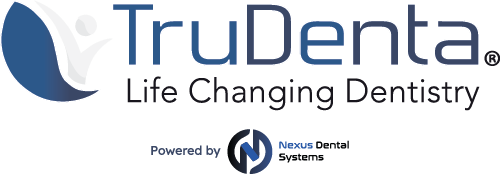Dentists and orthodontists who are not trained to treat dental forces create a greater opportunity for those who are.
In many cases, only a dental professional can help the estimated 80 million people suffering from painful symptoms caused by improper dental forces, called DENTOMANDIBULAR SENSORIMOTOR DYSFUNCTION (DMSD).
This disorder involves the temporomandibular joints (TMJs), masticatory musculature, jaw function, dental forces, and the common neurology of these structures and functions.

Journal of the American Dental Association reports:
“One in six patients visiting a general dentist had experienced orofacial pain during the past year. Dentoalveolar and musculoligamentous pains were the most prevalent types of pain. Pain in the muscles and temporomandibular joints was reported as frequently as that in the teeth and surrounding tissues in patients visiting general dentists.
Although the dental curriculum is concentrated on the diagnosis and management of pain and related conditions from teeth and surrounding tissues, it is imperative to include the training for other types of orofacial pain, particularly those from temporomandibular joint and musculoligamentous tissues.”
– JADA Cover story, October 2015, Volume 146, Issue 10, Pages 721-728

The American Dental Association declares that dentists are the:
“Doctors of oral health with expertise in not only treating teeth and gingival tissues, but also in caring for the muscles of the head, neck and jaw, and the nervous system of these areas. This care is now in the realm of oral systemic care and dentists can provide relief and therapy for pain symptoms associates with the greater head, neck, and dentofacial area.”
– American Dental Association, Dentists: Doctors of Oral Health http://www.ada.org/4504.aspx Accessed July 3, 2012
Assessment & Treatment

Only Dental Professionals
In many cases, only dental professionals can help the estimated 80 million Americans suffering from the painful symptoms caused by improper dental forces, called dentomandibular sensorimotor dysfunction (DMSD). Read More
Assessing DMSD
20% of your existing patients suffer from DMSD, as do 20% of all Americans. Your team members quickly assess patients for "red flags" (which indicate DMSD), utilizing TruDenta's patented technologies. Read More
Bite Force Analysis
TruDenta uses digital force measurement technology, powered by Tekscan®, for evaluating the amount of bite force that is present during closure, at closure, and while chewing. The technology is so advanced that it actually calculates the bite force and motion on a tooth-by-tooth basis. This digital exam literally shows a movie of the bite force in action revealing abnormal forces in the nerves, muscles and ligaments that are often the cause of symptoms. Read More
Mandibular Range of Motion
A normal opening for an adult is 53 mm to 57 mm. Limited or restricted range of motion (less than 40 mm) is a reduction in an individual’s ability for normal range of movement. Along with opening movement, an individual should be able to slide their jaw to the left and to the right at least 25 percent of their total mouth opening in a symmetrical fashion. Read More
Cervical Range of Motion
The TruDentaROM is a system of hardware and software that digitally measures cervical range of motion (ROM) impairment based upon AMA guidelines. This directly affects the proprioceptive feedback system of the dental occlusion, TMJ, and the muscles of mastication. Read More
Doctor Chair Time
A typical case requires less than one hour of doctor time in the diagnosis and minor occlusal adjustments during the rehabilitation period.Treatments are performed by a trained team member once per week, in less than one hour. The most severe cases require 12 treatments. Therapies are spa-like, non-invasive and require no drugs or needles. Most patients report dramatic results after the very fist treatment. Note: The majority of patients utilize an orthotic only during the treatment period, up to a maximum of 12 weeks. Read More

Therapeutic Ultrasound
The goal of therapeutic ultrasound treatment is to return circulation to sore, strained muscles through increased blood flow and heat. Another goal is to break up scar tissue and deep adhesions through sound waves.Therapeutic exposure to ultrasound reduces trigger point sensitivity and has been indicated as a useful clinical tool for managing myofacial pain. Additionally, ultrasound also has been shown to evoke antinociceptive effects on trigger points. Read More

Microcurrent Stimulation
Sub-threshold microcurrent stimulation reduces muscle spasm and referral pain through low electrical signal. It also decreases lactic acid build-up and encourages healthy nerve stimulation. In particular, microcurrent electrotherapy has been shown to help increase mouth opening significantly. Read More
Low-Level Cold Laser
Low level laser/light therapy is one of the most widely used treatments in sports medicine to provide pain relief and rehabilitation of injuries. Over 200 randomized clinical trials have been published on low level laser therapy, half of which are on pain.Low level laser/light therapy decreases pain and inflammation, accelerates healing of muscle and joint tissue 25 to 35 percent faster than without treatment, and reconnects neurological pathways of nerves to the brain stem, thereby inhibiting pain. Read More



 © 2025 - NATIONAL DENTAL SYSTEMS, INC. | 430 NORTH MAIN ST. SALEM, UT 84653 | CALL US TOLL-FREE 855-770-4002
© 2025 - NATIONAL DENTAL SYSTEMS, INC. | 430 NORTH MAIN ST. SALEM, UT 84653 | CALL US TOLL-FREE 855-770-4002